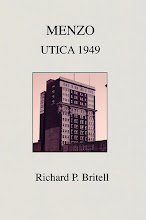
The “Theory of the Leisure Class,” is the title of a book written by a sociologist named Thorstein Veblen. I’m not going to attempt to summarize the book in any way. I tried to read it on more than one occasion but was never able to finish it. Perhaps I felt that it was a series of very cogent observations which would lead me to the conclusion the my life and work was all a complete waste of time.
At one point in the book he talks about architecture, here is what he has to say in 1899:
“The endless variety of fronts presented by the better
class of tenements and apartment houses in our cities is an
endless variety of architectural distress with a suggestion
of expensive discomfort. Considered as objects of beauty, the
dead walls of the sides and back of these structures, left
untouched by the hands of the artists, are commonly the best
feature of the building.”
This is very radical thinking for 1899, and the history of architecture from then until now looks as though it has strained every nerve just to please Mr. Veblen. But personally I think that such thinking leads to the Stalinist style of architecture we can see, throughout the world, starting in the thirties, and ending in the late seventies.
But I love the fact that he contrasts the fronts and sides of buildings in his writing, and it is true that in the architecture of his time the buildings exhibited these two radically different sensibilities. The fronts are ornate and decorative, and the backs and sides are utilitarian and devoid of decoration. I often develop the same observation in my drawings and this one is a very good example.
This drawing measures 5.75” x 8.”. It is drawn on gessoed cold press watercolor paper with a black wax pencil, with highlights put in with white paint and a brush.





